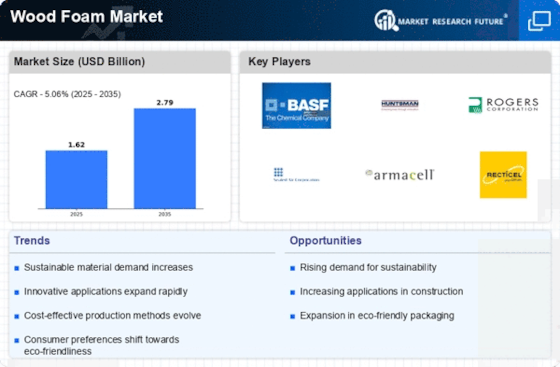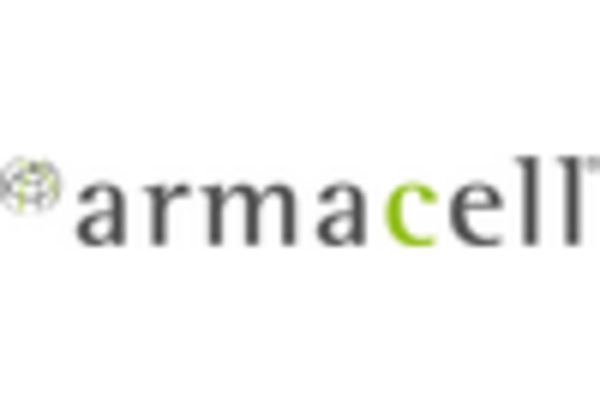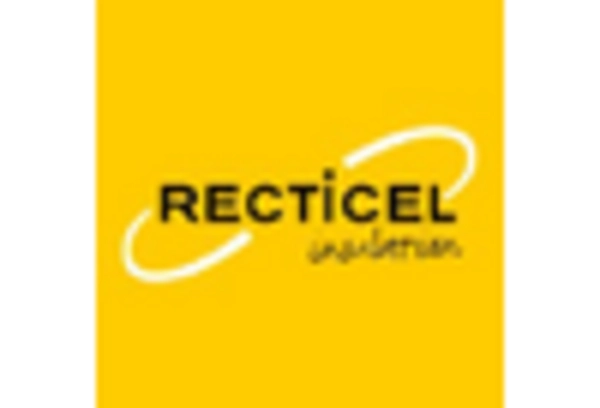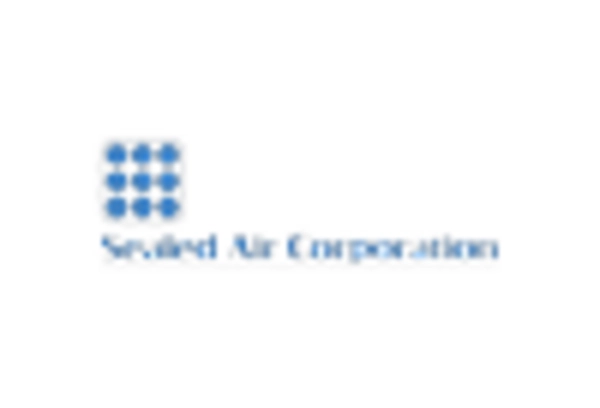The Wood Foam Market is currently characterized by a dynamic competitive landscape, driven by innovation, sustainability, and strategic partnerships. Key players such as BASF SE (Germany), Huntsman Corporation (US), and Sealed Air Corporation (US) are actively shaping the market through their distinct operational focuses. BASF SE (Germany) emphasizes innovation in material science, particularly in developing eco-friendly wood foam solutions that cater to the growing demand for sustainable products. Huntsman Corporation (US) is strategically positioned with a focus on expanding its product portfolio through mergers and acquisitions, enhancing its market share and technological capabilities. Meanwhile, Sealed Air Corporation (US) is leveraging digital transformation to optimize its supply chain and improve customer engagement, thereby enhancing its competitive edge. Collectively, these strategies contribute to a moderately fragmented market structure, where the influence of these key players is significant in driving growth and innovation.
In terms of business tactics, companies are increasingly localizing manufacturing to reduce lead times and enhance responsiveness to market demands. Supply chain optimization remains a critical focus, as firms seek to mitigate risks and improve efficiency. The competitive structure of the Wood Foam Market appears to be moderately fragmented, with several players vying for market share. The collective influence of these key players fosters a competitive environment that encourages innovation and responsiveness to consumer preferences.
In August 2025, BASF SE (Germany) announced the launch of a new line of bio-based wood foam products aimed at reducing carbon footprints in construction applications. This strategic move not only aligns with global sustainability trends but also positions BASF as a leader in eco-friendly materials, potentially attracting environmentally conscious consumers and businesses. The introduction of these products may enhance BASF's competitive positioning in a market increasingly focused on sustainability.
In September 2025, Huntsman Corporation (US) completed the acquisition of a specialty foam manufacturer, which is expected to bolster its capabilities in producing high-performance wood foam products. This acquisition is strategically significant as it allows Huntsman to expand its product offerings and enhance its technological expertise, thereby strengthening its market position. The integration of this new entity could lead to synergies that improve operational efficiencies and innovation.
In October 2025, Sealed Air Corporation (US) unveiled a new digital platform designed to streamline its supply chain processes and enhance customer interaction. This initiative reflects a broader trend towards digitalization within the industry, enabling Sealed Air to respond more effectively to customer needs and market changes. The platform's implementation may provide a competitive advantage by improving operational efficiency and customer satisfaction.
As of October 2025, the Wood Foam Market is witnessing trends that emphasize digitalization, sustainability, and the integration of advanced technologies such as AI. Strategic alliances are increasingly shaping the competitive landscape, allowing companies to pool resources and expertise to drive innovation. Looking ahead, competitive differentiation is likely to evolve, with a shift from traditional price-based competition towards a focus on innovation, technological advancements, and supply chain reliability. This transition may redefine how companies compete, emphasizing the importance of sustainable practices and customer-centric solutions.

















Leave a Comment